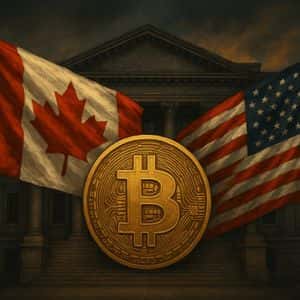BitcoinWorld Norwegian Krone: Unveiling a Resilient Future Amidst Strategic Norges Bank Decisions For investors keeping a keen eye on global financial shifts, especially those navigating the volatile cryptocurrency markets, understanding macro-economic signals is crucial. A recent forecast from Bank of America (BofA) has cast a spotlight on the Norwegian krone , predicting a stronger trajectory for the 0 outlook is largely driven by signals from Norges Bank, Norway’s central bank, indicating a more cautious approach to interest rate cuts than initially 1 does this mean for the global economy and your portfolio? Why is the Norwegian Krone Gaining Traction?
The Norwegian krone (NOK) often acts as a bellwether for commodity markets, particularly oil, given Norway’s status as a major oil exporter. However, its recent strength is not solely dependent on crude 2 factors are converging to create a more optimistic outlook for the NOK: Strong Economic Fundamentals: Norway boasts a robust economy, supported by its sovereign wealth fund, significant energy reserves, and a generally stable political 3 global economic growth has faced headwinds, Norway has demonstrated a degree of 4 Policy Divergence: As many major central banks, including the European Central Bank (ECB) and potentially the Federal Reserve, prepare for or have already begun interest rate cuts, Norges Bank appears to be charting a slightly different 5 divergence in monetary policy can make a currency more attractive to investors seeking higher 6 Pressures: Although inflation has shown signs of cooling globally, it remains a concern for many central 7 Bank’s cautious stance on rate cuts suggests it is still actively managing inflationary pressures, which can support the currency’s 8 these foundational elements is key to appreciating the broader forecast for the Norwegian krone and its potential impact on international trade and investment 9 is Norges Bank ‘s Stance Shaping NOK’s Future?
The central bank plays a pivotal role in a nation’s currency 10 Bank , like its counterparts, uses interest rates as a primary tool to manage inflation and economic 11 recent communications have been interpreted by analysts, including those at Bank of America, as leaning towards fewer and slower rate 12 strategic patience has several implications: Higher-for-Longer Rates: If Norges Bank maintains higher interest rates for a longer period compared to other major economies, it increases the attractiveness of holding NOK-denominated 13 typically seek out currencies offering better 14 Inflation Effectively: A sustained period of higher rates signals the central bank’s commitment to bringing inflation back to its 15 can bolster confidence in the currency’s purchasing power over 16 Expectations: Central bank forward guidance heavily influences market 17 Norges Bank signals a slower pace of cuts, it recalibrates these expectations, leading to a stronger bid for the krone as traders adjust their 18 deliberate approach by Norges Bank provides a crucial anchor for the krone’s value, distinguishing it from currencies whose central banks might be more aggressive in their easing 19 Ripple Effect of Slower Interest Rate Cuts : What Investors Need to Know The timing and magnitude of interest rate cuts are among the most watched economic indicators 20 the Norwegian krone, a slower pace of cuts has a direct and profound impact: Yield Differential: When Norway’s interest rates remain relatively high compared to those in the Eurozone or the US, the yield differential favors the 21 encourages capital inflow into Norway, increasing demand for the krone and thus its 22 Depreciation Risk: Aggressive rate cuts can sometimes signal economic weakness or a desire to stimulate growth at the cost of currency depreciation.
A cautious approach minimizes this risk, providing a more stable environment for the 23 on Borrowing Costs: While beneficial for the currency, higher-for-longer rates mean borrowing costs within Norway remain 24 can affect domestic economic activity, though the central bank balances this against inflation 25 investors, particularly those in the forex market, anticipating these moves related to interest rate cuts is 26 allows for strategic positioning to capitalize on expected currency movements, offering potential gains for those with exposure to the 27 the NOK Forecast : Bank of America’s Optimistic Outlook Bank of America’s recent analysis highlights a compelling case for the Norwegian 28 NOK forecast is not merely a short-term prediction but a reflection of deeper macro trends and policy signals.
Here’s a closer look at their perspective: Target Levels: BofA has reportedly adjusted its krone forecast, anticipating a stronger NOK against major currencies like the Euro (EUR) and the US Dollar (USD). While specific target levels were not detailed in the initial prompt, the direction is clear: upward 29 Rationale: The core of BofA’s optimism stems from Norges Bank’s hawkish stance relative to its 30 likely view Norway’s economic resilience and commitment to inflation targeting as robust pillars supporting the 31 to Peers: The forecast likely takes into account the broader global monetary policy 32 other central banks ease, Norges Bank’s restraint creates a favorable arbitrage opportunity for currency traders, pushing the NOK forecast 33 optimistic NOK forecast from a major financial institution like Bank of America sends a strong signal to the market, potentially attracting more institutional and retail interest in the Norwegian 34 the Global Forex Landscape: Opportunities and Challenges for the Norwegian Krone The global forex market is a complex interplay of economic indicators, geopolitical events, and central bank 35 the Norwegian krone, its position within this landscape presents both opportunities and challenges: Opportunities: Diversification: For investors heavily exposed to major currencies, the NOK can offer a diversification benefit, particularly given its commodity-linked nature and unique monetary policy 36 Trade Potential: If Norway maintains higher interest rates, the NOK could become an attractive candidate for carry trades, where investors borrow in a low-interest-rate currency and invest in a high-interest-rate 37 Price Support: While not the sole driver, a sustained recovery or stability in global oil prices would continue to provide underlying support for the NOK, bolstering Norway’s export revenues.
Challenges: Global Economic Slowdown: A significant global economic downturn could dampen demand for commodities, including oil, which would indirectly pressure the NOK despite Norges Bank’s 38 Risks: Unforeseen geopolitical events, particularly those affecting energy markets or European stability, could introduce volatility and uncertainty for the 39 Reversal: While unlikely in the short term, a sudden shift in Norges Bank ‘s policy stance, perhaps due to a rapid deterioration in domestic economic conditions, could quickly reverse the positive 40 must weigh these factors carefully when considering exposure to the Norwegian krone within the dynamic global forex 41 currency’s resilience, backed by strategic central bank decisions, makes it a compelling asset to monitor.
Conclusion: The Resilient Norwegian Krone on the Horizon Bank of America’s revised forecast for a stronger Norwegian krone underscores a significant shift in the currency’s 42 positive sentiment is predominantly fueled by Norges Bank’s deliberate and cautious approach to interest rate cuts, setting it apart from many other central banks 43 those observing the broader financial markets, this development highlights the crucial role of monetary policy divergence and strong economic fundamentals in shaping currency 44 the global forex market always presents its share of uncertainties, the current signals suggest a period of potential strength and stability for the 45 an eye on Norges Bank’s future communications and global commodity trends will be key to understanding the krone’s evolving 46 learn more about the latest Forex market trends, explore our article on key developments shaping the Norwegian Krone’s future 47 post Norwegian Krone: Unveiling a Resilient Future Amidst Strategic Norges Bank Decisions first appeared on BitcoinWorld .
Story Tags

Latest news and analysis from Bitcoin World



